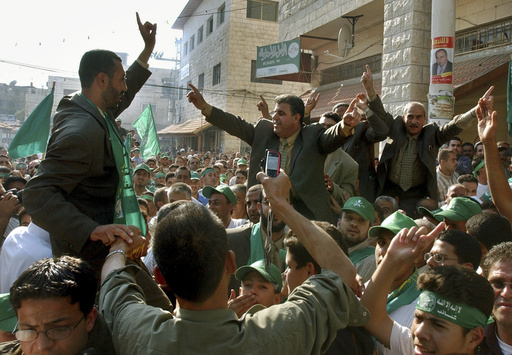JERUSALEM — The situation in Gaza has reached a critical point, especially following the Hamas attack on southern Israel on October 7, 2023. This assault led to significant violence, including numerous fatalities and kidnappings, prompting an extensive military response from Israel that has recently paused under a fragile ceasefire arrangement.
On Tuesday, former U.S. President Donald Trump proposed that displaced Palestinians from Gaza be permanently relocated to areas outside of the region, suggesting that the U.S. could take “ownership” of the land. This statement has reignited discussions about the territory’s future and added to the ongoing tensions surrounding Gaza. The notion of “ownership” raises eyebrows, as many Palestinians regard the Gaza Strip as an essential part of their anticipated state, despite the various governing bodies that have dominated throughout its history. The aspiration for Palestinian statehood, which would encompass the Gaza Strip, enjoys considerable international backing.
The history of the Gaza Strip is marked by significant events:
1948 – 1967: Egyptian Control
Before the establishment of Israel in 1948, Gaza was part of the broader region governed under British colonial rule. Post-war, following Israel’s victory over the Arab coalition, Egyptian forces managed a narrow stretch of land bordering Israel, Egypt, and the Mediterranean. The societal upheaval during this period resulted in approximately 700,000 Palestinians being displaced, a historical event referred to by them as the Nakba, or “catastrophe,” which saw many refugees streaming into Gaza.
Under Egypt’s military administration, Palestinian refugees found themselves homeless and without citizenship rights, as Egypt did not acknowledge their status. Meanwhile, Israel prohibited their return. Many had to rely on UNRWA, the agency dedicated to assisting Palestinian refugees, which remains active in Gaza. Some young Palestinians responded by joining the ranks of the “fedayeen,” resistance fighters who conducted raids into Israel.
1967 – 1993: Israeli Occupation
In the 1967 Six-Day War, Israel took control of Gaza, as well as the West Bank and East Jerusalem, areas that remain contentious today. The Palestinian Authority, with aspirations to govern these territories as part of a future state, emerged in this context. Throughout this time, Israel established over 20 settlements in Gaza and signed a significant peace treaty with Egypt, brokered by U.S. President Jimmy Carter.
In recent times, Egyptian President Abdel Fattah el-Sissi has evoked this historical treaty when he refused to allow Palestinian refugees to enter Egypt, warning that the entry of potential militants could jeopardize the fragile peace with Israel.
The Palestinian uprising against Israeli governance began in late 1987 and sparked over five years of protests and violence. During this period, the militant organization Hamas also emerged in Gaza.
1993 – 2005: Palestinian Authority Governance
Amid initial optimism following significant peace negotiations between Israeli and Palestinian leaders, control of Gaza transitioned to the Palestinian Authority due to the Oslo Accords, crafted between Israeli Prime Minister Yitzhak Rabin and PLO leader Yasser Arafat. Yet, this hope was short-lived, as a wave of attacks by Hamas and the assassination of Rabin by an extremist severely undermined peace efforts. Subsequent attempts to secure a settlement faltered, culminating in the eruption of the second intifada in late 2000.
As hostilities subsided in 2005, Israeli Prime Minister Ariel Sharon executed a unilateral withdrawal from Gaza, displacing approximately 9,000 settlers and leaving a divided Israeli society in its wake.
2005 – 2023: Hamas Ascendancy
Hamas’s victory in the 2006 parliamentary elections over Fatah marked a significant turning point. Following internal conflicts, Hamas forcibly took control of Gaza from the Palestinian Authority. Subsequently, both Israel and Egypt enacted a stringent blockade, severely hampering the economy and causing unprecedented unemployment, fostering a militant environment in this one of the world’s most densely populated regions.
Through numerous confrontations with Israel, Hamas has fortified its position, acquiring advanced weaponry and reinforcing its governance structures, including law enforcement and booth controls for border crossings.
2023 Hamas Attack and Subsequent War
The recent Hamas incursion on October 7, 2023, resulted in approximately 1,200 deaths, predominantly among civilians, alongside around 250 hostages taken by the group. After a ceasefire in November 2023, efforts have been made to negotiate hostage releases, with Israeli military campaigns resulting in the deaths of over 47,000 Palestinians, a significant number of whom were women and children. These events have left significant portions of Gaza in devastation and displaced about 90% of the region’s 2.3 million residents.
Notably, Israeli military operations have identified and targeted prominent Hamas figures, including Yahya Sinwar and Mohammed Deif, while Hamas militants have quickly reemerged following the ceasefire. Initial phases of cessation of hostilities see Hamas slated to release 33 hostages in exchange for nearly 2,000 Palestinian prisoners.
However, if ongoing negotiations, facilitated by the United States, Qatar, and Egypt, do not yield a satisfactory resolution, the region may brace for renewed conflict as early as March.



